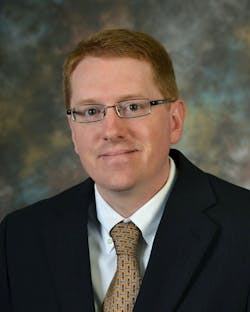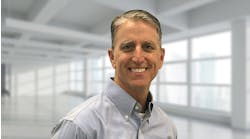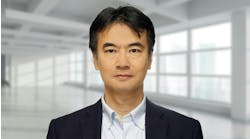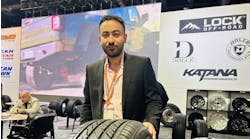A few months ago, Yokohama Tire Corp. relocated its corporate headquarters (HQ) from Fullerton to Santa Ana, Calif., after 28 years. It also moved its Fullerton distribution center (DC) to a new 658,000-square-foot facility in Chino, Calif.
The moves were part of a massive supply chain management and logistics plan, according to Jeremy Kahrs, senior director of supply chain, logistics and corporate quality assurance. In a question and answer interviews supplied by Yokohama, Kahrs discusses the reasoning behind the plan -- and how it will help Yokohama and its dealers grow business further.
Question: Why did Yokohama decide to move its Southern California distribution center and headquarters to two separate locations?
Kahrs: The DC and HQ are expanding, and we simply outgrew our facility in Fullerton. They’re two different operations, and there is a different equation for the ideal location for each. The cost of real estate for a DC and the proximity to customers rules that decision. The location of your employees and proximity to your vendors that service your headquarters, among other factors, dictates where you want your offices.
Question: Why was Chino chosen for the Western Region DC?
Kahrs: We receive tires from manufacturing plants in Salem, Va., and Mount Vernon, Ill., and, in the future will receive them from West Point, Miss., as well as our offshore facilities. We had to look at how the products moved from these facilities to our customers ultimately, and the cost of logistics. We scrutinized both the inbound and outbound flow examining all means of transportations involved in the delivery of the tires. We use intermodal to send tires east, so transportation plays a big part of the equation. We knew putting a large DC close to the port would be cost-prohibitive. Ultimately, Chino provided the best business case.
Question: How will the dealers and the end-users benefit from the move to Chino?
Kahrs: One of our biggest goals with the move is to elevate our customer service to the next level. The new location, given its expansive size, and innovations we are introducing to our operations, will accomplish that.
For example, given the DC’s larger size, not only will we be able to hold more inventory, we will also be able to have it function as a hub. We’ll process inventory that comes from various sources and allocate it to our other distribution centers as demand requires. This means we’ll have better control of having the product in the right place at the right time. For dealers, this means having the right product mix when they need it.
There could be situations where there are heavier-than-predicted sales out of one DC and lighter-than-predicted sales in another. The end result might be a back order. If we bring inventory into Chino, hold it there and then redistribute it, we’re going to have appropriate levels of products where they are needed.
Question: What are the benefits of the new Chino DC in terms of modernization?
Kahrs: Besides having it function as a hub, we will be introducing an entirely new demand planning system and warehouse management system (WMS). Both of these will bring about higher levels of precision and efficiency.
Inside the DC at Chino, we’ve installed numerous wireless access points where equipment on the floor is constantly talking to the network. This results in delivering real-time information to operators for increased efficiency. Everything the operators will do will be via a scanner, which in turn will increase accuracy and save time.
We piloted the use of the new WMS at our DC in Columbus, Ohio, while the DC in Chino was being built. The WMS will be rolled out to other DCs, including Chino this year.
We’ve also switched from wooden pallets to steel ones. Not only are the steel pallets more durable, they will also allow us to stack products higher given our expanded capacity.
Question: How many loading docks at the Chino DC and how many tires will be stored there?
Kahrs: We have 116 loading docks. We did a lot of calculations on the number of tires we needed to hold, and interestingly enough, the size of the building is almost exactly what we targeted. The capacity of the facility is about a million tires.
Question: Is the move to Chino going to create more jobs?
Kahrs: Yes, there will be more jobs due to growth over time, and workers will be needed to handle the increased volume of containers coming into Southern California.
Question: Is Chino expected to be a 24-hour operation?
Kahrs: We are considering a three-shift operation. That helps mitigate congestion at the port and the ability to get containers out. Sometimes it’s easier to move containers out in the middle of the night.
Question: Will overseas tires still go to Chino when the Mississippi plant opens this year?
Kahrs: Yes. We want to hold product as close to where it’s manufactured as we can. For the offshore product that comes to the West Coast, we’ll hold some of it in Chino until the DCs in the east need replenishment.
Question: Why are logistics so important to Yokohama?
Kahrs: Yokohama is focused on customer service, so we try to minimize the amount of time from when an order is placed to when we can deliver it to a dealer. The other piece of the equation is that it’s expensive to ship tires. You don’t want to ship a tire from Southern California to Columbus and then turn around and ship it back to Albuquerque. Our new logistics strategy continuously evolves to minimize the number of miles that those tires move across the country.
Question: You talked about the selection process for the Chino DC. Why did you choose Santa Ana for the new 57,000-square-foot headquarters building?
Kahrs: Different equation than the DC. We’re more concerned about the driving distance for our employees, vendors and for our customers flying in who need to be close to the airport.
Employee commute time was a huge factor. We looked at every single employee, how long their commutes were to Fullerton and how long their commutes would be to a new office.
Question: Many companies have moved out of California. What made Yokohama stay?
Kahrs: We’re a California company and that’s part of the Yokohama culture. We have a strong workforce here, and we believe the future is bright in Southern California.
Question: Will there be more job openings in the new headquarters?
Kahrs: We’ve added quite a few people over the past year. My expectation is that we’ll continue to hire this year.
Question: Yokohama prides itself on being a green company. What are some environmental aspects of the new buildings?
Kahrs: At the Chino DC, we were very conscious of the energy efficiency of the building. We have a solar panel system on the roof and a highly efficient, energy-saving lighting system. And in Santa Ana, in addition to more efficient lighting, we’ve put in two EV charging stations for employees to plug in hybrids or electric vehicles.
We’re also focused on minimizing our paper waste. We’ve introduced an electronic content management system which allows people to digitally archive instead of printing paper. We’re always looking for ways to help the environment.
For more information on Yokohama’s broad product line, visit www.yokohamatire.com. Check out the following links to connect with Yokohama:
www.facebook.com/yokohamatirecorp.



